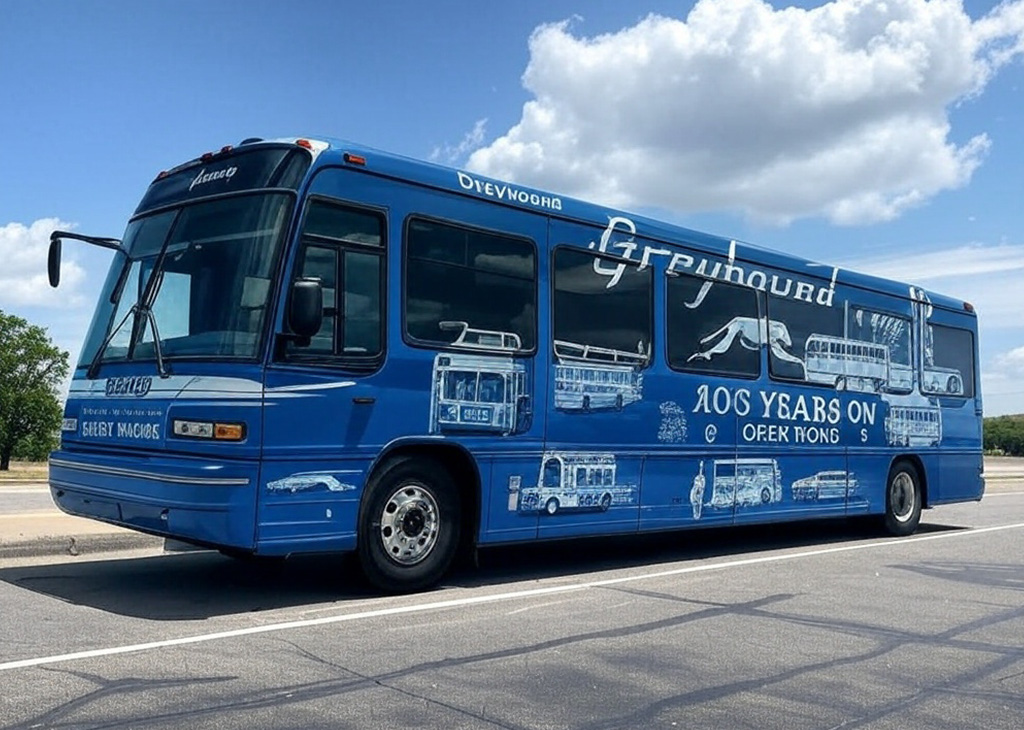Tailored Around You: The Underrated Evolution Of Employee Benefits In North America
Suppose you're starting a new job, and HR gives you a benefits menu. Choose more paid time off, a childcare stipend, a gym membership, or trade it all for professional training courses. This wasn't a sci-fi daydream — it was taking place in North American workplaces in 2025. From Silicon Valley tech behemoths to Midwest manufacturers, employers are realizing that one-size-fits-all benefits won't work anymore. Instead, there's a rise of customizable benefits that allow employees to DIY their happiness. Let's take a look at why this trend is exploding, how it fulfills the needs of Millennials and Gen Z and what it means for companies struggling to attract the best talent in a cut-throat marketplace.

Benefits from Standard to Selectable: The Evolution
In its October 2024 issue, Forbes stoked buzz with an article on workplace trends, writing that the U.S. economy maintained a 3 percent GDP growth rate and that late 2024 wage growth outpaced inflation. It was supposed to be a win-win for workers and businesses, but Indeed's 2025 U.S. Hiring and Employment Trends Report threw shade: even with more job openings than before the pandemic, hiring slowed down, and competition for talent ramped up — especially in tech and construction. Even high salaries weren't enough to entice the best — benefits became the new battleground.
Benefits once eschewed the mysteries of the marketplace: health insurance, paid leave, a 401(k) plan. But, does that really work for everyone? One Gen Z'er who's craving to travel the world might think parental leave is a bore, and a Millennial with aging parents and small children at home might care more about a few additional health screenings than an increase in their salary. According to the Robert Half 2025 In-Demand Skills Report, more than 60 percent of U.S. workers are looking for benefits that meet their unique circumstances rather than a cookie-cutter package.
This demand is transforming the game. In Q4 2024, Google instituted a new policy: employees have a benefits points pool, from which they can redeem points for remote work supplies, mental health counseling or additional vacation days. The news went viral on X, generating 100,000 mentions in three days. For once, a company understands we aren't assembly-line robots! gushed one user. Another wrote, I'm cashing in all my points for yoga classes—see ya, boss! Google isn't alone — the Society for Human Resource Management (SHRM) found that 32% of North American companies tested some form of bespoke benefits in 2024, with estimates suggesting they'll hit 50% by the end of 2025. It's not just a cafeteria plan; it's a deep knowledge of what employees want, especially considering Millennials and Gen Z are in the driver's seat.
FLORENCE, Italy — Millennials and Gen Z: the fussy new generation of workers
To understand why customized benefits are on the rise, get acquainted with the workforce's new golden children: Millennials (1981–1996) and Gen Z (1997–2012). In 2025, they're 29–44 and 13–28, respectively, and they make up nearly half of U.S. workers. According to the Standard, Millennials have become parennials (parents balancing careers and families) and Gen Z, digital natives are flooding the job market (February 2025). They don't just want good pay, easy work — they want tailored, flexible lives.
Get it right and you'll be dubbed The Mighty Millennial, a legacy earned by the millennial generation, conditioned by the 2008 economic crisis and financial turmoil that followed, and often yearning for stability. An analysis by The College Investor in February 2025 showed more than 55% value life-improving benefits, such as childcare assistance or flexible work hours, over direct pay raises. Sarah, a 35-year-old marketing manager, said, I've got two kids. My company's health plan is good, but I want daycare money or a work-from-home day. Gen Z takes it a step further, seeking self-fulfillment and immediate gratification. Dec. 4, 2024, 6:22 p.m. The New York Post flagged a trend in December 2024: more young workers are taking micro-retirements, a few months or a year off to travel, learn or reset. I'd take travel stipends over extra insurance any day, a 22-year-old software engineer wrote on X. Life's for now, right?
No one likes to be boxed in, including these two generations: between 64% and 66% of North American consumers (especially younger ones) this year said they prefer flexible digital fitness options over rigid gym memberships, per the 2025-2035 Hyper-Personalized Fitness Market Report published by Future Market Insights. That led companies to wonder: if employees want fitness customized, why not benefits? Adobe, for example, introduced a flex benefits account — a budget that employees can spend as they choose, whether on upskilling courses, mental health support or even pet insurance.
A Competitive Advantage for Companies: Distinguishing Yourself in a War For Talent
In the cut-throat hiring landscape of North America, tailored benefits are a game-changer. As of Q1 2025, Robert Half Consulting provided the unemployment rate for marketing and creative fields as below the U.S. average (4.1%), but companies are still having difficulties retaining employees. Why? Top talent has options. If they can't get something different from you, they will leave.
Canadian e-commerce giant Shopify hit it out of the park in the late 2024 with a menu of benefits. Workers choose three of the following core perks: career development funds, wellness stipends, or additional vacation. News of the policy lit up X—one user quipped, Shopify's got me rewriting my resume! They'll literally pay for my training courses. The result? A Shopify employee satisfaction survey in Q1 2025 revealed 87% of all staff felt more likely to stay long-term, an increase of 12% from the previous year.
Smaller American businesses are getting in on the act as well. According to a January 2025 luxury housing trends report by Sotheby's International Realty, wealthier Millennials and women are entering the market, not simply as buyers, but as major movers and shakers. This means SMEs have learnt salary is not the only way to retaining them. A manufacturer in Ohio piloted a points-based benefits model: employees received points to spend on health checkups, cleaning services at home or tickets to local music festivals. We found employees don't always want cash—they want to feel seen, the owner explained. This is backed up by SHRM data: customizable benefits during 2024 delivered 8% less turnover and 15% more employee referrals. With Google and Microsoft poaching in tech, a flexible benefits package might be the tipping point.

The Double-Edged Sword: Some Challenges and Pushbacks
Personalized perks sound great, but they're not all sunshine. First, there's the cost. According to a SHRM survey, 32% of companies have claimed that personalized benefits provide a 10–15% increase in operating costs because of extra HR assistance and data tracking. We're managing people's preferences and managing the budget — it's exhausting, one human resources manager complained.
And then there's the fairness question. When one team mate grabs the premium gym membership up for grabs and another ends up with basic health cover, grumbles can ensue. In February 2025, Bloomberg Businessweek covered a tech company where unequal perks led to a Slack fight that went viral on X, where one user remarked: Customization's great, but don't make it a class divide! Another concern is privacy — customizing benefits typically requires personal data, such as health or family information. One anonymous worker said: I don't want my company to know I've got anxiety, even if it's for mental health support. These problems are surmountable if we are transparent — Adobe, for example, tells employees that their data is used only for customization, and that they can opt out at any time.
What's Next: The Future of Personalised Benefits
In 2025, personalized benefits are just the beginning. Now tech's about to take this up a notch—picture AI pitching you on benefits based on your habits. Love running? It implies promotional sponsorship in a marathon. Got kids? It could be focused on daycare help. According to Future Market Insights, the global hyper-personalized services market is expected to grow from USD 4.6 billion 2025 to around USD 26.1 billion by 2035, recording an annual growth of 18.9%. Loyalty is a piece of that pie, and workplace benefits are a big piece of that pie.
Social trends are also nudging things forward. According to Travel And Tour World, in January 2025, 76% of Gen Z and Millennials enjoy solo travel, seeking personalisation and freedom. Travel sabbatical stipends or remote work allowances will pique their interest. That was the conclusion of Shopify's chief HR officer after talking to me in an interview: The future workplace isn't about who pays the most — it's about who gets their people. It sounds like a cliché, but the data supports it — custom benefits are the new gold.l
A Revolution in the Making
From Google's menu of benefits points to Shopify's à la carte options, customized benefits are changing the game in North America. They're delivering on Millennials' and Gen Z's expectations for personalization and flexibility — while also giving companies an edge in the hiring wars. There are hurdles, of course — costs, fairness, privacy — but the trend is clear: benefits are no longer a handout from companies; they're a puzzle that employees solve for themselves. So, the next time you see a friend posting on X about his or her company's pet insurance or meditation course perk, don't be surprised — it's the 2025 workplace norm. What's on your benefits menu?
